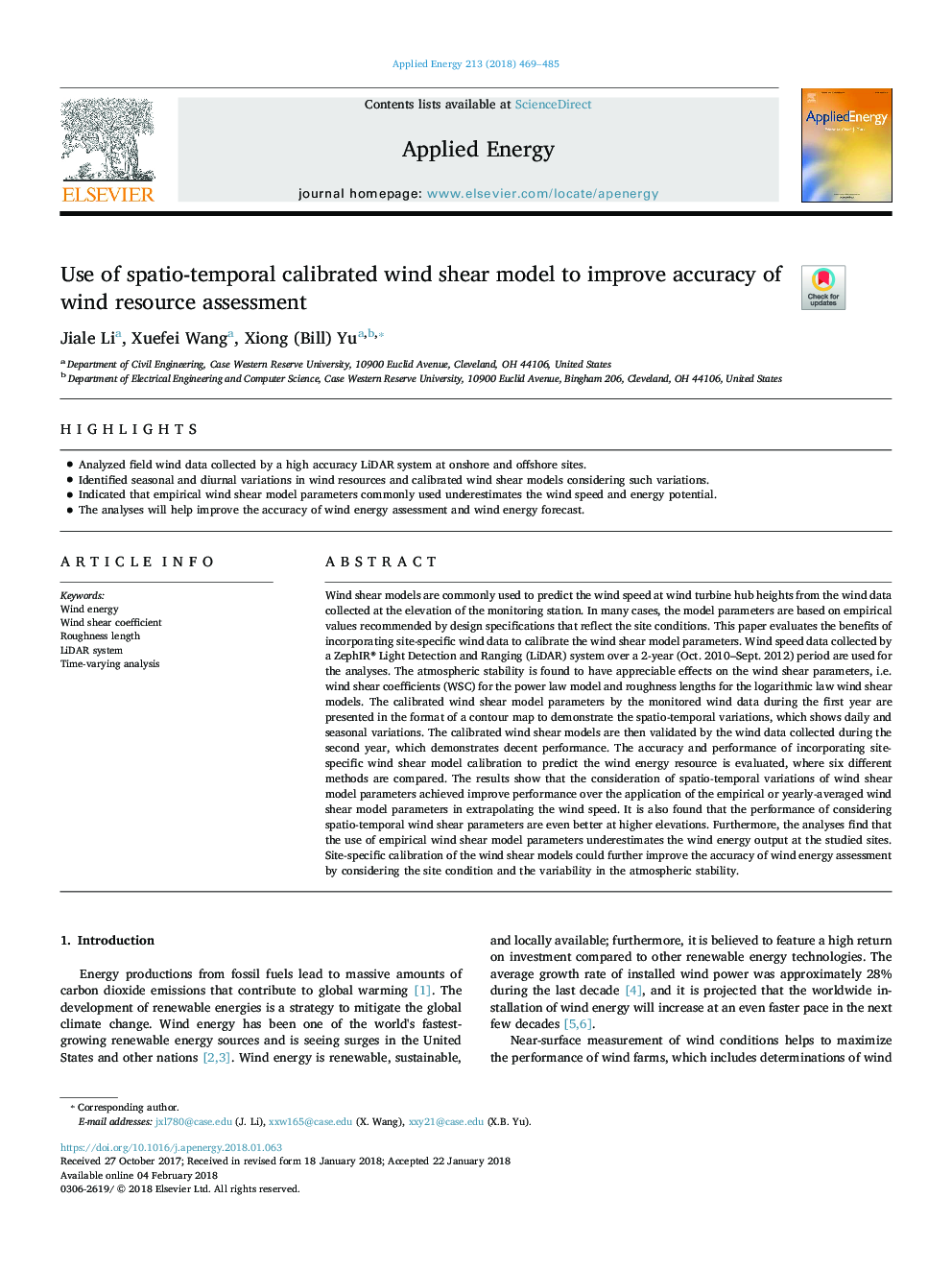| کد مقاله | کد نشریه | سال انتشار | مقاله انگلیسی | نسخه تمام متن |
|---|---|---|---|---|
| 6680829 | 1428077 | 2018 | 17 صفحه PDF | دانلود رایگان |
عنوان انگلیسی مقاله ISI
Use of spatio-temporal calibrated wind shear model to improve accuracy of wind resource assessment
ترجمه فارسی عنوان
استفاده از مدل برش باد با کالیبره فضایی-زمانی برای بهبود دقت ارزیابی منابع باد
دانلود مقاله + سفارش ترجمه
دانلود مقاله ISI انگلیسی
رایگان برای ایرانیان
کلمات کلیدی
موضوعات مرتبط
مهندسی و علوم پایه
مهندسی انرژی
مهندسی انرژی و فناوری های برق
چکیده انگلیسی
Wind shear models are commonly used to predict the wind speed at wind turbine hub heights from the wind data collected at the elevation of the monitoring station. In many cases, the model parameters are based on empirical values recommended by design specifications that reflect the site conditions. This paper evaluates the benefits of incorporating site-specific wind data to calibrate the wind shear model parameters. Wind speed data collected by a ZephIR® Light Detection and Ranging (LiDAR) system over a 2-year (Oct. 2010-Sept. 2012) period are used for the analyses. The atmospheric stability is found to have appreciable effects on the wind shear parameters, i.e. wind shear coefficients (WSC) for the power law model and roughness lengths for the logarithmic law wind shear models. The calibrated wind shear model parameters by the monitored wind data during the first year are presented in the format of a contour map to demonstrate the spatio-temporal variations, which shows daily and seasonal variations. The calibrated wind shear models are then validated by the wind data collected during the second year, which demonstrates decent performance. The accuracy and performance of incorporating site-specific wind shear model calibration to predict the wind energy resource is evaluated, where six different methods are compared. The results show that the consideration of spatio-temporal variations of wind shear model parameters achieved improve performance over the application of the empirical or yearly-averaged wind shear model parameters in extrapolating the wind speed. It is also found that the performance of considering spatio-temporal wind shear parameters are even better at higher elevations. Furthermore, the analyses find that the use of empirical wind shear model parameters underestimates the wind energy output at the studied sites. Site-specific calibration of the wind shear models could further improve the accuracy of wind energy assessment by considering the site condition and the variability in the atmospheric stability.
ناشر
Database: Elsevier - ScienceDirect (ساینس دایرکت)
Journal: Applied Energy - Volume 213, 1 March 2018, Pages 469-485
Journal: Applied Energy - Volume 213, 1 March 2018, Pages 469-485
نویسندگان
Jiale Li, Xuefei Wang, Xiong (Bill) Yu,
